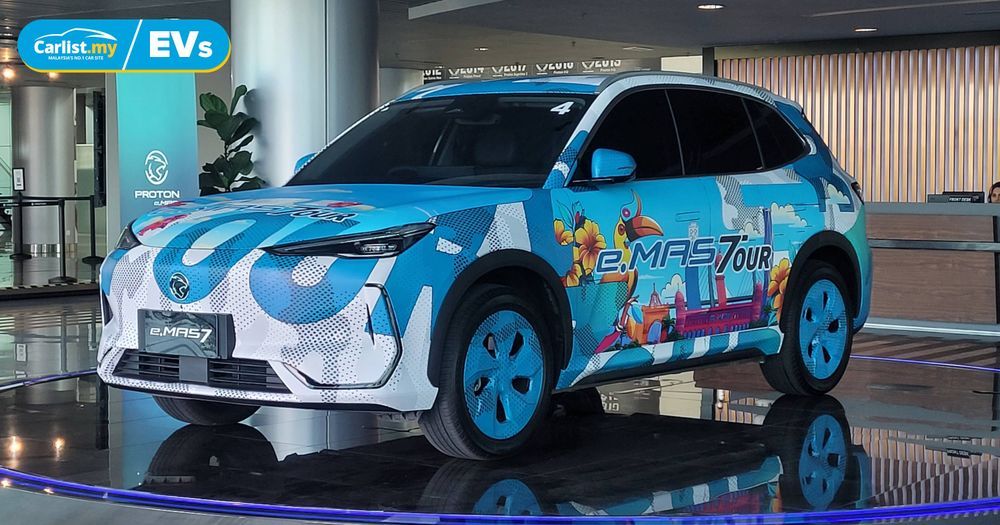The slow-drip feed of pre-launch marketing blitz of the Proton eMAS 7 hasn’t slowed down, but perhaps has hit something of an inflection point with the reveal of more information, order books opening, more detailed spec sheet, and estimated starting price revealed at just RM120,000 (booking fee is RM500)! All this ahead of its possible December 2024 premiere, 6 months after the initial brand reveal.
Positioned as a cutting-edge model, the eMAS 7 promises advanced technology, impressive range options, and enhanced safety features, much of which is tapped from the Geely Galaxy E5, one of the Chinese automaker’s newest and most advanced global models, though Proton are quick to distance itself from the ‘rebadge’ label.
Here’s what we now know for sure: The eMAS 7 offers two battery configurations, catering to different range requirements, and these being the primary differentiator between the two variants offered – the eMAS 7 Prime and the pricier eMAS 7 Premium.
At the more affordable end of the scale, the Prime’s 49.52kWh battery is capable of delivering WLTP range of 345km on a single charge, while the Premium comes with a larger 60.22kWh battery, extending the range up to 410km on the WLTP cycle.
Proton has equipped the eMAS 7 with the latest in battery technology through Aegis Short Blade battery developed by Geely, designed to maximise energy density and safety. DC fast charging (up to 80kW for the Prime and 100kW for the Premium) allows for a rapid 30-80% charge in just 20 minutes, ideal for quick top-ups on the go. Commendably, both variants also support AC charging at the industry standard 11kW, with the Prime variant requiring approximately 4.9 hours for a 30-80% charge, and the Premium variant taking around 6.1 hours.
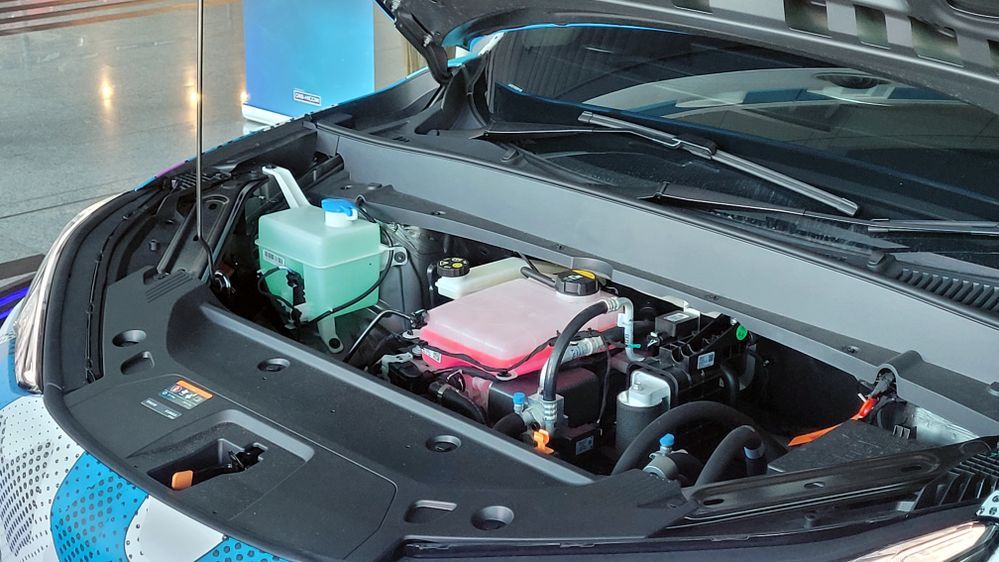
Under the bonnet, both variants of the eMAS 7 pack an equal punch with the same 12-in-1 electric drive system, delivering 218PS of maximum power and 320 Nm of torque to the front wheels, capable of shoving the inaugural Proton EV to 100 km/h in a swift 6.9 seconds from a standstill. Top speed, meanwhile, is electronically capped at 175km/h.
Proton eMAS 7 boasts dimensions comparable to a C-segment SUV with a length of 4,615 mm, a width of 1,901 mm, and a height of 1,670 mm, sitting on a wheelbase of 2,750 mm, which is 50mm longer than that of a Honda CR-V, thus providing ample space for both passengers and cargo.
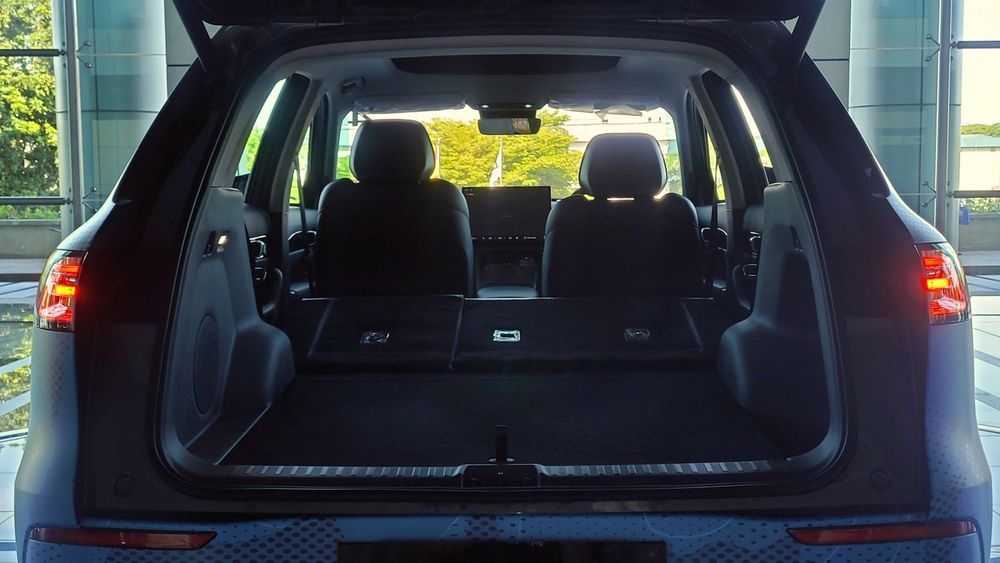
Out the rear, we find a generous rear boot capacity of 461 liters that expands to 1,877 liters when the second row is folded down.
Unless you’ve been hiding under a rock, you’re probably at least somewhat familiar with the eMAS 7’s shape, especially given it has been on something of a nationwide tour lately, albeit fully wrapped in camo. Design highlights include LED headlights, a stylish LED-through-type tail light, and modern concealed door handles that lend a sleek look.
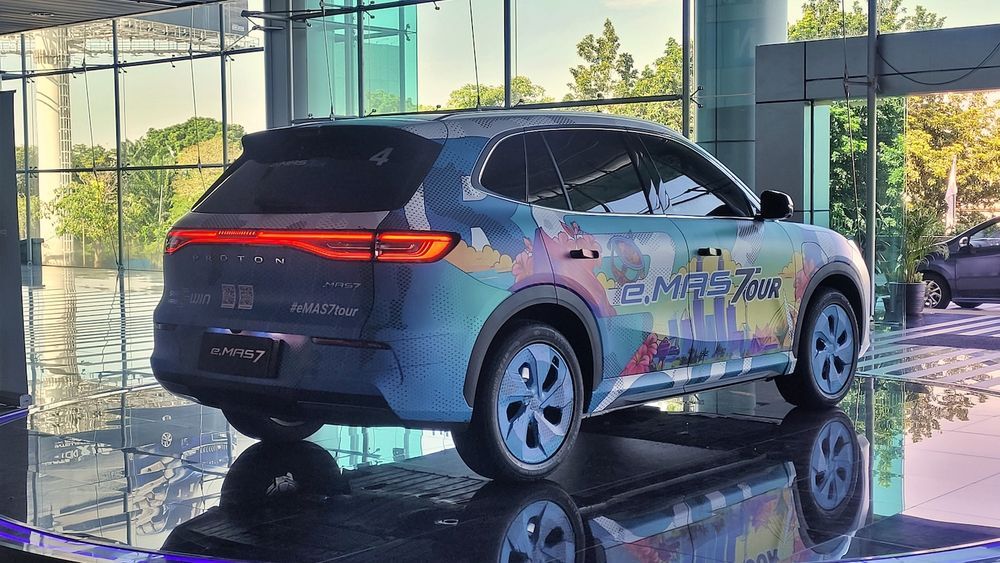
Notably, the eMAS 7 Premium gains a panoramic sunroof with a sunshade as well as additional conveniences such as a power tailgate, active grille shutter, and larger, 19-inch Goodyear EfficientGrip tyres for improved stability and ride quality. This will be one of its major visual differentiators against the Prime’s slightly smaller 18-inch alloys running on Giti rubber.
Inside, the eMAS 7 exudes modernity with a 10.2-inch LCD instrument cluster and a 15.4-inch touchscreen display with a 2.5K resolution as its infotainment hub, equipped with Flyme Auto and an advanced 7nm automotive-grade chipset for swift response times. The interface snappiness resulting from robust processing power is something we can definitely confirm having spent some time in the car.
However, in something of a theme developing with Proton, support for Apple CarPlay and Android Auto connectivity will reportedly not be available at launch but instead pushed through an over-the-air (OTA) update next year.
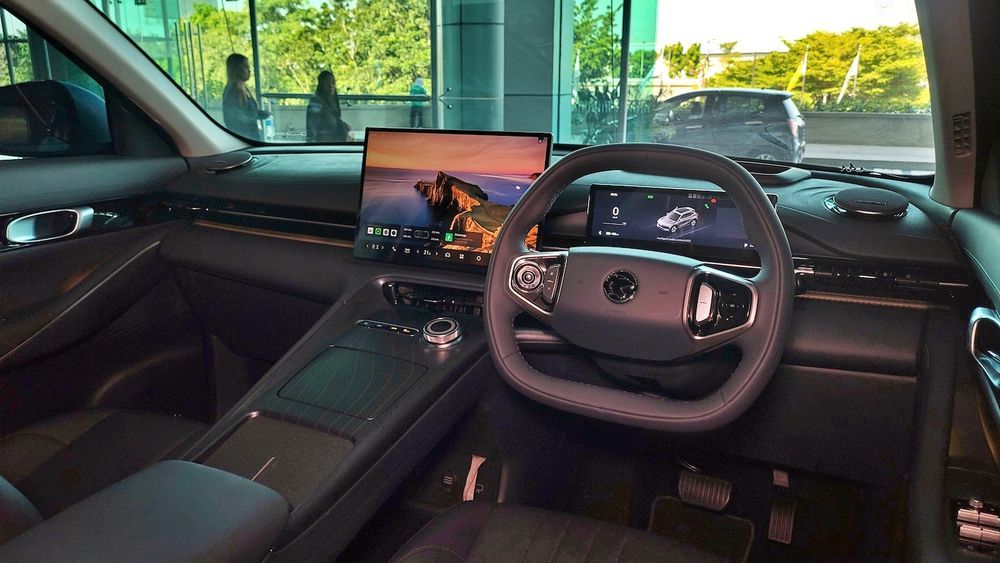
Both variants feature soft leatherette seats in black to match the rest of the cabin trim (as opposed to the pale off-white of the Galaxy E5), with the driver’s seat offering six-way power adjustments and memory functions, while the Premium model includes a. Also standard are intelligent keyless entry, a walk-away auto lock function, and automatic air conditioning with an N95 cabin filter, ensuring clean, fresh air for all passengers.
The interior on the Premium variant also offers additional perks, including a 256-color ambient lighting system, ventilated front seats, four-way powered front passenger seat, wireless charging pad for smartphones, and a 16-speaker setup.
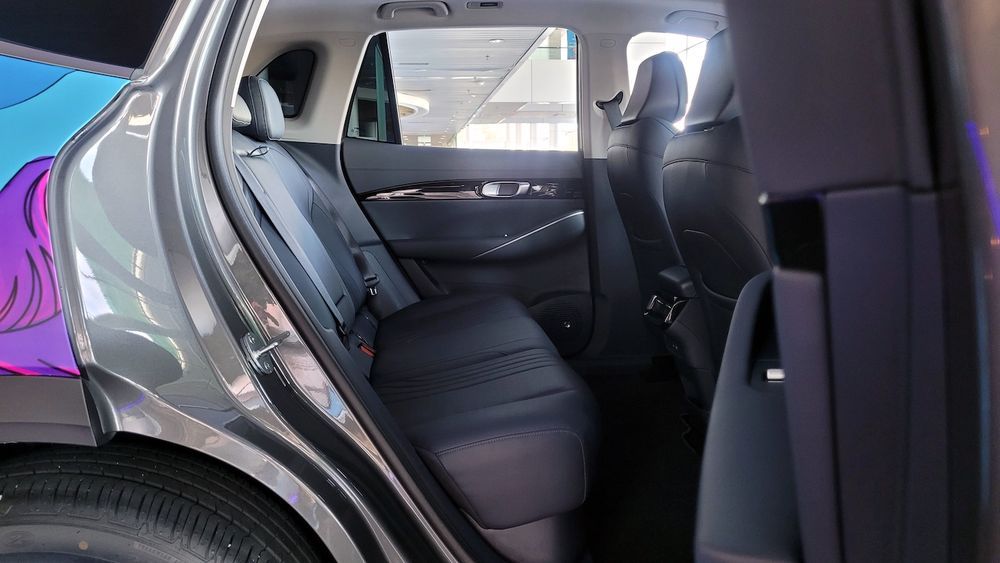
Proton has not skimped on safety features on the eMAS 7, regardless of which variant you go for. The list is long and includes front, side, and side curtain airbags for front and rear passengers. Additionally, the eMAS 7 includes auto-hold and advanced driver assistance (ADAS) suite with intelligent cruise control (ICC), adaptive cruise control (ACC), autonomous emergency braking (AEB), lane-keeping assist, emergency lane-keeping assist, and a blind-spot detection system. A 360-degree camera system enhances visibility, making it easier to navigate tight spaces or crowded parking areas.
So far, then, the eMAS 7 is shaping up to be an impressively specified, thoughtfully-designed, technology-rich electric SUV that proudly wears the Proton badge. But, then again, we already knew how much time and development resources Geely poured into the Galaxy E5.
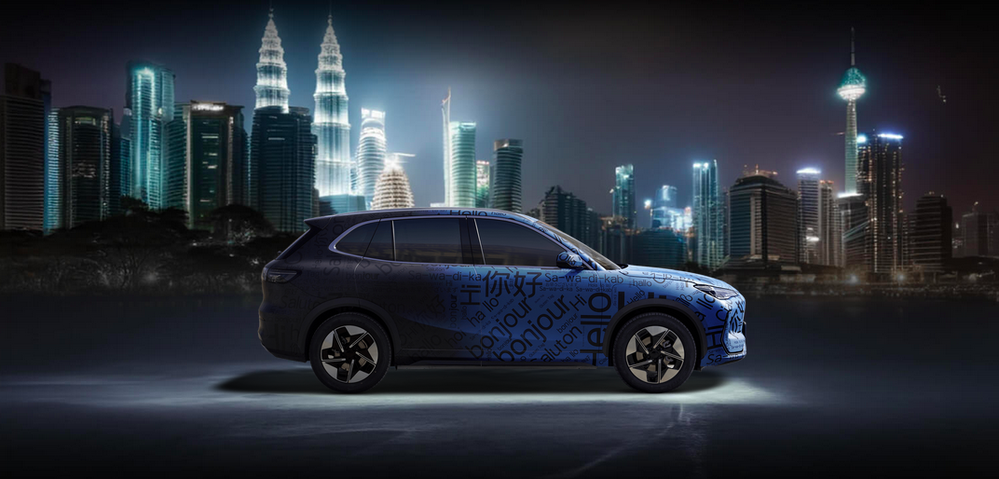
Proton has been busy trying to further mold the electric SUV within its own means into something a little more unique to them and the preferences of Malaysians, running it through extensive local testing, ride and handling tweaks, and an exhaustive marketing campaign.
In the end, though, it will come down to local buyers being swayed toward the EV lifestyle, whether it’s through national pride or the ‘sustainability’ narrative, or both. Fortunately, the Proton seems to offer a compelling new option in the eMAS 7 that should worry EVs costing much more.
Have you placed your booking yet?
